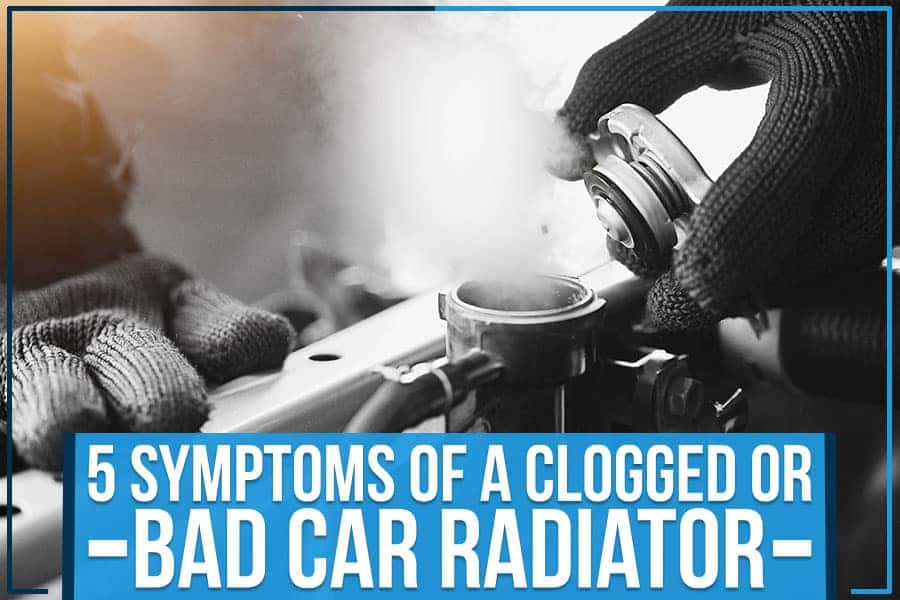What Are the Signs of a Faulty Car Radiator?
A faulty car radiator may exhibit signs such as overheating, low coolant, leaks, and a sweet smell. The car radiator plays a critical role in the proper functioning of a vehicle’s cooling system.
However, over time, it may start showing signs of wear and tear, signaling a potential problem. Signs of a faulty car radiator may include overheating, low coolant levels, leaks underneath the vehicle, and a distinct sweet smell. Ignoring these signs can lead to serious engine damage and costly repairs.
We’ll explore the common indicators of a faulty car radiator, along with the potential implications of neglecting these warning signs. Understanding the signs of a problematic radiator can help drivers identify issues early and prevent major breakdowns on the road.

Credit: www.scottrobinsonhonda.com
Common Signs Of A Faulty Car Radiator
Knowing the signs of a faulty car radiator is crucial for every car owner. The radiator plays a vital role in keeping your engine cool, and if it isn’t functioning properly, it can lead to serious engine damage. In this article, we will discuss the common signs you should be aware of that could indicate a faulty car radiator.
Overheating Engine
An overheating engine is one of the telltale signs of a faulty car radiator. If you notice the temperature gauge on your dashboard consistently rising into the red zone or the engine temperature warning light illuminating, it is likely due to a malfunctioning radiator. When the radiator fails, it cannot effectively dissipate heat from the engine, causing it to overheat.
Other indications of an overheating engine include steam or smoke coming from under the hood, a strong smell of coolant or burning, and an engine that is running rough or losing power. If you experience any of these symptoms, it is crucial to address the issue promptly to prevent further damage to your engine.
Coolant Leaks
Coolant leaks are another common sign of a faulty car radiator. The radiator contains coolant, which circulates through the engine to absorb heat and maintain optimal operating temperatures. If you notice puddles or stains of bright green, yellow, or orange liquid underneath your car, it is a clear indication of a coolant leak.
In addition to visible leaks, you may also detect a sweet or pungent odor coming from your engine bay, indicating a coolant leak. It’s important to note that coolant leaks can lead to a loss of coolant, causing the engine to overheat and potentially resulting in severe engine damage. Therefore, it is vital to address any coolant leaks promptly.
It’s worth mentioning that while these are the most common signs of a faulty car radiator, they are not the only signs. If you notice irregular engine performance, frequent overheating, or any other unusual symptoms, it’s advisable to have a professional mechanic inspect your radiator and cooling system.
In Conclusion
Recognizing the signs of a faulty car radiator can help you prevent significant engine damage and avoid costly repairs. If you notice an overheating engine or coolant leaks, it’s crucial to address the issue promptly. Regular maintenance and inspections can also help prevent radiator problems and ensure the proper functioning of your car’s cooling system.
Effects Of A Faulty Radiator On The Vehicle
When a car radiator is not functioning properly, it can have detrimental effects on the vehicle. It is crucial to be aware of these signs in order to prevent further damage and ensure the efficient operation of your vehicle.
Engine Damage
A faulty radiator can lead to severe engine damage. When the radiator fails to regulate the temperature of the engine, the risk of overheating increases, which can cause the engine to seize or warp the cylinder head, resulting in costly repairs. The engine’s overall performance and longevity can also be compromised due to prolonged exposure to high temperatures.
Reduced Fuel Efficiency
A malfunctioning radiator can impact the vehicle’s fuel efficiency. When the engine temperature rises due to a faulty radiator, it can lead to increased fuel consumption as the engine works harder to maintain its operating temperature. This can result in higher fuel costs and decreased mileage per gallon, putting extra strain on your wallet.
Cost Of Repairing A Faulty Car Radiator
Facing a faulty car radiator can be a significant inconvenience for any driver. The cost of repairing a faulty car radiator is an important consideration for many car owners as it can vary widely depending on several factors. Whether you opt for a DIY approach or seek professional repair, there are certain signs to watch out for and factors to consider before making any decisions.
Diy Vs. Professional Repair
Deciding whether to repair your car radiator on your own or seek professional help can impact the overall cost. While a DIY approach may seem appealing due to potential cost savings, it’s important to understand the complexity of radiator repair and ensure you have the necessary skills and tools to complete the job effectively and safely.
Factors Affecting Repair Costs
Various factors can influence the cost of repairing a faulty car radiator, including the severity of the issue, the type of radiator, and the extent of the damage. Additional factors such as the make and model of the vehicle, labor costs, and the need for replacement parts can also contribute to the overall expense.
Preventive Maintenance For Car Radiators
A car radiator is an important component of the cooling system that helps regulate and maintain the engine’s temperature. Over time, however, it may become faulty and fail to function effectively. It is essential to recognize the signs of a faulty car radiator to prevent further damage or breakdowns.
Regular Coolant Checks
Regular coolant checks are crucial in maintaining the health of your car radiator. The coolant coolant is responsible for absorbing and dispersing the heat generated by the engine, preventing it from overheating. Low coolant levels may indicate a leakage or a problem with the radiator.
Here are a few steps to perform regular coolant checks:
- Park your car on a flat surface and allow the engine to cool down.
- Locate the coolant reservoir, usually near the engine. It is a transparent plastic container with a coolant level indicator.
- Inspect the coolant level and ensure it is between the minimum and maximum marks. If it is lower, add a suitable coolant mixture to the reservoir.
- Check for any visible leaks near the radiator or hoses. If you notice any leaks, it is recommended to take your car to a professional for further inspection and repair.
Cleaning The Radiator
Cleaning the car radiator is an important preventive maintenance step to ensure the efficient functioning of the cooling system.
Here are a few steps to clean your radiator:
- Start by disconnecting the negative terminal of the car battery to avoid any electrical shocks.
- Locate the radiator and use a soft brush or compressed air to remove dirt, debris, and insects from the fins and the surface.
- You can also use a radiator cleaner, following the instructions mentioned on the label, to remove any stubborn contaminants.
- Inspect the fan blades and ensure they are clean and free from any obstructions.
- After cleaning the radiator, reconnect the negative terminal of the car battery.
Performing regular coolant checks and cleaning your car radiator are simple preventive maintenance tasks that can help identify and address potential issues early on. By incorporating these practices into your car maintenance routine, you can extend the lifespan of your radiator and avoid costly repairs in the future.
Importance Of Timely Radiator Repair
Avoiding Costlier Repairs
Failing to address a faulty radiator promptly can lead to more extensive and expensive vehicle problems.
This simple repair can prevent major engine issues and save you money in the long run.
Maintaining Vehicle Performance
A properly functioning radiator is essential for keeping your vehicle running smoothly.
By fixing radiator issues early on, you can ensure optimal performance and avoid breakdowns.
Regular maintenance and immediate repair of radiator problems are crucial for your vehicle’s overall health and longevity.

Credit: www.customcompleteautomotive.com

Credit: www.cutterwaipahumazda.com
Frequently Asked Questions On What Are The Signs Of A Faulty Car Radiator?
How You Know If Your Radiator Is Bad?
Signs of a bad radiator include overheating, leaks, low coolant levels, and a strong coolant odor. Watch out for these indicators.
How Do I Know If My Car Needs A New Radiator?
Signs that your car may need a new radiator include overheating, coolant leaks, strange smells, and a low coolant level. Keep an eye on these indicators to ensure proper functioning of your vehicle’s cooling system.
Can A Radiator Be Bad Without Leaking?
Yes, a radiator can be bad without leaking. Issues like clogs, corrosion, or a faulty thermostat can cause a malfunction. Regular maintenance can help prevent these problems.
How Do You Check If A Radiator Is Working?
To check if a radiator is working, feel for heat on the surface. Listen for the sound of flowing water or steam. Look for any visible leaks or rust. Keep an eye on the temperature gauge to ensure it operates within the specified range.
If any issues arise, consult a professional.
Conclusion
To sum up, understanding the signs of a faulty car radiator is crucial for maintaining the health of your vehicle. By keeping an eye out for warning signals such as overheating, coolant leaks, and strange noises, you can address any issues before they escalate.
Regular maintenance and prompt repairs ensure that your radiator functions optimally, keeping your engine cool and prolonging the longevity of your car. Stay vigilant and prioritize the health of your radiator to avoid breakdowns and costly repairs.

